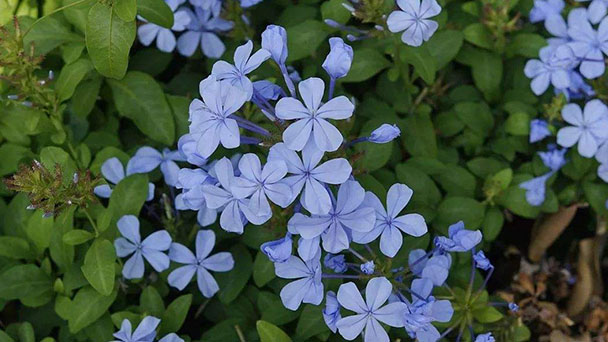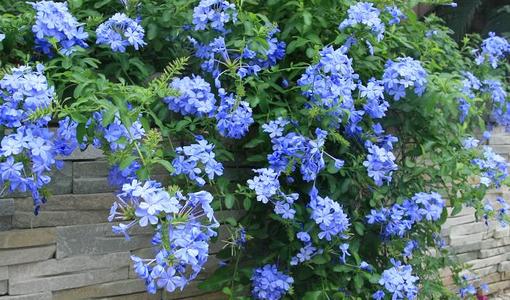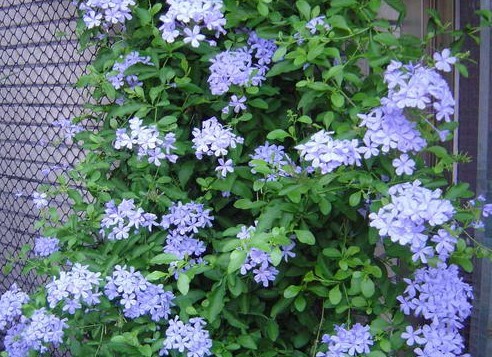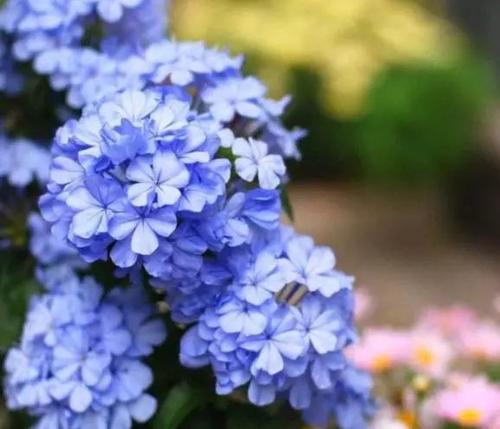Ceratostigma plumbaginoides Bunge profile
Written by Maggie
Nov 16 2020

Ceratostigma plumbaginoides Bunge is a perennial erect herb.Ceratostigma plumbaginoides Bunge grows strong, heat-resistant, more resistant to high temperature and humidity, less pests, simple management, and long viewing period. The leaf color is emerald green, the flower color is elegant, and the hot summer gives people a cool feeling. Potted plants can be used to decorate the room and balcony.
Ceratostigma plumbaginoides Bunge picture

Morphological characteristics of Ceratostigma plumbaginoides Bunge
Ceratostigma plumbaginoides Bunge is a perennial erect herb, usually about 20-30 cm high. Several newer branches grow from the upper end of the underground stem close to the ground at several nodes each year to become the above-ground stems. The underground stems have many branches, about 2-3 mm in diameter, with reddish brown to brown scales on the nodes, the scales are ovoid and the base is holding the stem.
The above-ground stems of ceratostigma plumbaginoides bunge are thin and weak (often thinner than the underground stems), without branching or branching, without bud scales at the base of the stems and branches, and zigzag-shaped along the nodes, slightly ribbed or with more obvious grooves in the upper internode , There are sparse bristles on the edges of the upper branches, covered by fine calcium particles.
Ceratostigma plumbaginoides Bunge leaves broadly ovate or obovate, 4-6 cm long, 2-3 cm wide, the ends of the branches are smaller, the apex is acuminate or occasionally obtusely round, the base is abruptly narrow and then tapered or only tapered. The outer edges are glabrous or nearly glabrous, often with small calcium particles.
Ceratostigma plumbaginoides Bunge inflorescence is born on the short stalk of the branch tip and the upper 1-3 node leaf axils. The base is tightly supported by a lanceolate to oblong leaf, containing 15-30 or more flowers, often in bloom. There are 1-5 flowers open; bracts are 6.5-8 mm long, 3-3.5 mm wide, long ovate, apex acuminates into a short thin tip, small bracts 8-9.5 mm long, 3-3.5 mm wide, narrow and oblong It is long and narrow ovate, with thin tips at the apex; the calyx is 13-15 mm long; the middle diameter is about 1.5-2 mm, there are sparse long bristles along the veins, and the lobes are about 2 mm long; the corolla is 25-28 mm long, and the tube is purple-red , lobes blue, inverted triangle, 8 mm long, 8 mm wide at the apex, with a shallow apex and a narrow triangular short tip extending along the midrib; filaments extend slightly beyond the throat of the corolla, and the anthers are about 2 mm long, Blue; ovary oval, styles of different lengths, short stigmas are not exposed, and long stigmas extend above the anthers.
Ceratostigma plumbaginoides Bunge capsules are oval-ovate, light yellow-brown, about 6 mm long; seeds are reddish brown, rough, and edged, and the tip is about 1/3 tapered into a beak. Flowering from July to September, fruiting from August to October.
The growth habit of Ceratostigma plumbaginoides Bunge
Ceratostigma plumbaginoides Bunge was born in the foothills of shallow mountains and flat ground. ceratostigma plumbaginoides Bunge loves warmth, heat resistance, and is not tolerant to cold. In North China and other temperate regions, there is a flower cultivation in North China and other temperate regions. The optimum temperature for growth is 25℃, and it likes light and is slightly tolerant. It is not suitable for exposure to the hot sun and requires a humid environment. , Dryness is not good for its growth. It is moderately drought-tolerant. It should grow on sandy loam soil rich in humus and unblocked drainage.
Ceratostigma plumbaginoides Bunge geographical distribution
Ceratostigma plumbaginoides Bunge is mainly distributed in Henan along the Taihang Mountains (Shanxi) in the north to Beijing, and east to Jiangsu (Xuzhou), Shanghai and Zhejiang Zhoushan Islands (Qushan); Ceratostigma plumbaginoides Bunge is native to South Africa. It is cultivated around the world, and many places in southern China use it as open field cultivation, but in the north it needs to be cultivated in a greenhouse.

Cultivation techniques of Ceratostigma plumbaginoides Bunge
Mode of reproduction
Ceratostigma plumbaginoides Bunge seeds are 85 seeds per gram. It can be reproduced by sowing, cutting and ramification. Cuttings and ramets are mostly used for propagation. Cuttings can be carried out in spring, early summer or late summer, and cuttings are generally carried out in May to June. The suitable temperature for rooting is 20. C~25℃, take root about 20~28 days after insertion.
Seedling cultivation
Plug specifications: 288, 200, 128 or 72 plugs.
Medium selection: A light medium with no pests and diseases and good drainage. It can be mixed with peat and vermiculite in a certain proportion, with a pH value of 5.8-6.2 and an EC value of less than 0.75mS/cm. Ceratostigma plumbaginoides Bunge is covered with coarse vermiculite after sowing.
Temperature: Ceratostigma plumbaginoides Bunge suitable temperature for germination is 22℃~23℃, and suitable temperature for seedling growth is 18℃~21℃. Germination days are 4~6 days.
Light: Ceratostigma plumbaginoides Bunge does not need light at the germination stage, but supplementing light after germination can effectively shorten the planting cycle.
Moisture: Keep the medium moist during the growing period of Ceratostigma plumbaginoides Bunge to avoid wilting of the seedlings.
Fertilizer: After the cotyledons are exposed, start to apply 100ppm fertilizer 1-2 times a week.
Later period: The concentration of nitrogen fertilizer is increased to 150~175ppm, and fertilizers with a ratio of nitrogen, phosphorus and potassium of 13-2-13 or 14-0-14 and 20-10-20 can be applied alternately.
Growth regulator: Ceratostigma plumbaginoides Bunge does not need to be used at the plug seedling stage. The number of days for plug seedlings is 6~8N (288 plugs).
Potted flower management
Medium: pH 5.5~6.0. The planting depth is based on the potting soil just over the top of the plug seedlings. A small amount of fertilizer can be added to the medium.
Temperature: Ceratostigma plumbaginoides Bunge grows at a suitable temperature of 17℃~26℃, and can withstand a maximum of 35℃. Strong light and higher temperature are conducive to branching.
Fertilizer: Apply 200~300 pops of all-element compound fertilizer at least once a week.
Moisture: Keep the media surface dry daily. Pay attention to watering thoroughly when watering to prevent the EC value from being too high and soil salinization.
Management: Ceratostigma plumbaginoides Bunge needs to be topped 2 to 3 times during the process of growing to mature seedlings. Topping can delay the flowering period by about 2 weeks.

The ornamental value of Ceratostigma plumbaginoides Bunge
Ceratostigma plumbaginoides Bunge grows strong, heat-resistant, more resistant to high temperature and humidity, less pests, simple management, and long viewing period. The leaves are emerald green and the flower colors are elegant. The hot summer gives people a cool feeling. Potted plants can be used to decorate the room and balcony. Mature plants with overhanging branches are more suitable for combined potted plants in large containers. They are mostly used for environment layout around stadiums, roads, overpasses and other major sections. They can also be planted on the edge of forests or decorated with lawns. Ceratostigma plumbaginoides Bunge is one of the new excellent flowers for decorating the Beijing environment during the Olympic Games.
Latest Updated
- Benefits of Bugleweed - 7 Science-backed Health Benefits
- Bugleweed Dangers & Side Effects - Is It Poisonous?
- How to Plant Evergreen Trees - What You Should Know
- When to Plant Evergreens - Grow Guide for Evergreen Trees
- 12 Wonderful Evergreen Shrubs for Your Garden
- 12 Popular Evergreen Plants with Pictures for Beginners
- When And How To Prune A Lilac Bush Like a Pro
- How to Grow & Care for Lilac Vine (Hardenbergia Violacea)
- Japanese Lilac Tree (Syringa Reticulata) Care & Propagation Guide
- Shumard Oak Pros and Cons - What to Know
Popular Articles
- Winter maintenance of Antirrhinum Majus
- How to Grow Terminalia Mantaly Tree
- How to Grow and Care for Crossostephium Chinense
- How to grow Antirrhinum Majus in spring
- Peristeria Elata (Dove Orchid) Profile: Info & Care Guide
- Underwatered Snake Plant (Sansevieria Trifasciata) - Signs And How To Fix
- How to Care for Brazilian Jasmine Plant (Mandevilla Sanderi)
- How to Grow & Care for Graptopetalum Purple Delight in Summer
- Rosa Chinensis (China Rose): Plant Growing & Care Tips
- How to Care for Baby Sun Rose (Aptenia Cordifolia)